International Journal of Ecology
Vol.07 No.03(2018), Article ID:26372,15
pages
10.12677/IJE.2018.73019
The Distribution Patterns of Main Ecological Groups of Insects in the World and Its Ecological Significance
—Biogeographical Regionalization Research XII
Qi Shen1, Xiaojing Ma2, Yingdang Ren2, Xiaocheng Shen2,3*
1First Clinical College, Henan University of Traditional Chinese Medicine, Zhengzhou Henan
2Institute of Plant Protection, Henan Academy of Agricultural Sciences, Zhengzhou Henan
3College of Life Sciences, Zhengzhou University, Zhengzhou Henan

Received: Jul. 23rd, 2018; accepted: Aug. 6th, 2018; published: Aug. 13th, 2018

ABSTRACT
Using a new similarity general formula and a new multivariate similarity clustering analysis method, we analyzed the distribution data of four ecological groups of insects: medical important insects, economic significant insects, freshwater insects and carnivorous insects. Four highly consistent clustering results were obtained. Their levels are clear, structure is reasonable, and they conform to the requirements of the statistics, geography, ecology and biology. Based on the relationship of food chain between biota groups, this study indicates the homogeneity of distribution pattern between animals, plants and microorganism. So bio-geographers studying different organisms should unite and make joint world bio-geographical regionalization scheme.
Keywords:Biogeographical Regionalization, Clustering Analysis, Medical Important Insects, Economic Significant Insects, Freshwater Insects, Carnivorous Insects
世界昆虫主要生态类群的分布格局及其生态学意义
—生物地理区划研究之XII
申琪1,马晓静2,任应党2,申效诚2,3*
1河南中医药大学第一临床医学院,河南 郑州
2河南省农业科学院植物保护研究所,河南 郑州
3郑州大学生命科学学院,河南 郑州

收稿日期:2018年7月23日;录用日期:2018年8月6日;发布日期:2018年8月13日

摘 要
对医学昆虫、经济昆虫、淡水昆虫、肉食性昆虫等不同生态类群的分布状况,用我们新提出的相似性通用公式和多元相似性聚类分析法进行分析,均得到层次清晰、结构合理、符合地理学、统计学、生态学、生物学要求的聚类结果,而且4个分析结果表现出高度的一致性。基于生物之间的食物链关系,本研究预示着世界动物、植物、微生物之间分布格局的同质性。因此各类生物的生物地理学家应联合起来,共同制定世界生物地理区划方案。
关键词 :生物地理区划,聚类分析,医学昆虫,经济昆虫,淡水昆虫,肉食性昆虫

Copyright © 2018 by authors and Hans Publishers Inc.
This work is licensed under the Creative Commons Attribution International License (CC BY).
http://creativecommons.org/licenses/by/4.0/


1. 引言
昆虫纲是世界上最大的生物类群 [1] [2] ,种类占世界生物总种类的半数之多,属数占60%以上。生命形式及生活环境极为复杂,受环境因素影响也极为敏感。它们的生存与分布更能够体现生态及环境的差异或变化。不少昆虫已作为环境质量的指示物。因此对它们的分布规律的探讨比其它生物类群更具有生态学价值。
昆虫地理学虽然与植物地理学、高等动物地理学几乎同时起步,并且已经在昆虫起源与进化、昆虫的分布与扩散、地理的阻障与演化、区系地理的相似与相异等都做了大量的工作 [3] [4] [5] ,但长期以来,一直借用或套用与昆虫没有多大直接关系的哺乳动物的地理区划系统,既缺乏令人信服的理由,更没有充分的论证,这实在是有失严谨的憾事。可喜的是近些年来,已有一批学者陆续对世界的蚁科 [6] 、隐翅虫科 [7] 、蚊科 [8] 、粉虱科 [9] 、毛翅目 [10] [11] 、广腰亚目 [12] 、蚤目 [13] 等昆虫类群提出自己的地理区划意见,尽管很少应用定量分析方法,其中已不乏有见地的新解和建议。
根据昆虫的取食对象及生活环境,可以归纳出若干不同生态类群。一是与人类及温血动物有密切关系的医学类昆虫,它们或刺吸血液,或取食羽毛,或传染疾病,如蚊科、蚋科、虻科、蠓科、蝇科、臭蝽科、白蛉亚科、锥猎蝽亚科以及虱目、蚤目、食毛目等昆虫;二是与人类生产和生活环境有密切关系的产业经济类昆虫,它们或取食农林作物,或取食贮藏物,或破坏建筑物,造成经济损失,如夜蛾科、螟蛾科、蝗科、蝼蛄科、盲蝽科、蚜科、白蚁科、天牛科、叩甲科、鳃金龟科等昆虫;三是主要生活于溪水、河流及湖泊中的淡水昆虫,它们取食水生动植物,如蜉蝣目、蜻蜓目、襀翅目、广翅目、毛翅目以及龙虱科、水甲科、沼梭甲科、水龟甲科、摇蚊科、蚊科、水虻科等昆虫;四是肉食性昆虫,它们或寄生,或捕食那些植食性昆虫,如螳螂目、蜻蜓目、脉翅目、蛇蛉目、捻翅目以及步甲科、瓢虫科、姬蜂科、茧蜂科、赤眼蜂科、胡蜂科、寄蝇科、食蚜蝇科、食虫虻科等昆虫。当然这仅是昆虫纲中的一部分,还有相当多的昆虫可以归并为其它类群。这些不同生态类群的昆虫,其分布格局有何异同,能够揭示何种生态学意义,本研究予以尝试分析。
2. 材料和方法
2.1. 昆虫生态类群
在昆虫纲104,344属中,4个生态类群分别有4544属、46,137属、6522属和23,767属(表1)。分布资料主要来源于分类学家的专著 [14] - [40] 、专业性网站整理的数据库 [41] - [68] ,并随时补充新发表的分类、分布资料 [69] [70] [71] [72] 。本研究以属作为基础生物单元(basic biological unit, BBU)。
Table 1. The genera number of every ecological group of global insects
表1. 供分析的昆虫各生态类群属数
2.2. 基础地理单元划分
按照地形、气候等生态条件和昆虫分布资料的详略程度,本研究把全球陆地(除南极洲)划分为67个基础地理单元basic geographical units (BGU) (图1)。作为聚类分析与地理区划的基础。其中以平原为主的BGU有21个,以丘陵为主的BGU有11个,以山地为主的BGU有12个,以高原为主的BGU有11个,以荒漠为主的BGU有5个,岛屿型的BGU有7个。有27个BGU处在热带,34个BGU地处温带,6个BGU的地域跨入寒带。
2.3. 构建数据库
用微软Access构建数据库,将各个BGU作为各列,将各BBU作为各行。将每个属分布的行政区域记录转化为BGU记录录入数据库中,有分布记“1”,无分布不记,这些基础分布记录(Basic Distributional Records, BDR)将是定量分析的基础材料。各生态类群在各个BGU的分布属数如表2。
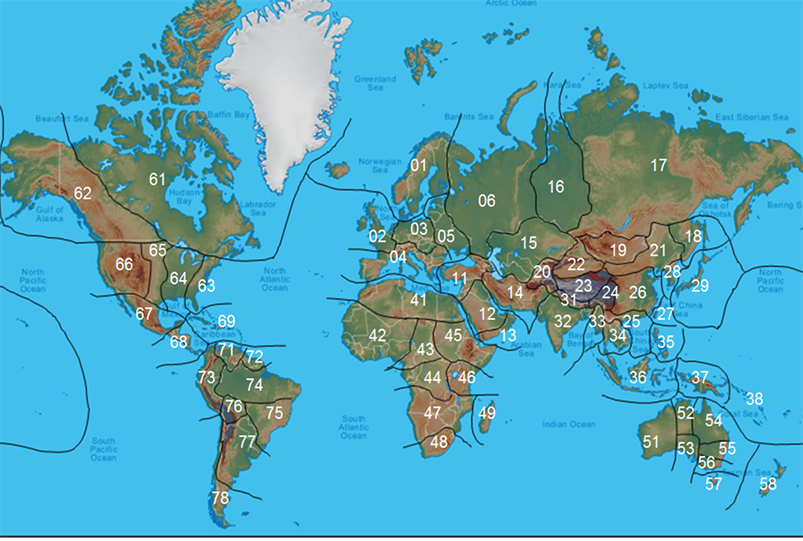 01 北欧Northern Europe, 02 西欧Western Europe, 03 中欧Central Europe, 04 南欧Southern Europe, 05 东欧Eastern Europe, 06 俄罗斯欧洲部分European Russia, 11 中东Middle East, 12 沙特阿拉伯Saudi Arabia, 13 也门与阿曼Yemen and Oman, 14 伊朗高原Plateau of Iran, 15 中亚Central Asia, 16 西西伯利亚Western Siberia, 17 东西伯利亚Eastern Siberia, 18 乌苏里地区Ussuri region, 19 蒙古Mongolia, 20 帕米尔高原Plateau of Pamir, 21 中国东北Northeastern China, 22 中国西北Northwestern China, 23 中国青藏高原Qinghai-Xizang plateau of China, 24 中国西南Southwestern China, 25 中国华南Southern China, 26 中国中东部Centre-eastern China, 27 中国台湾Taiwan region of China, 28 朝鲜半岛Korea Peninsula, 29 日本Japan, 31 喜马拉雅地区Himalayan region, 32 印度与斯里兰卡Indian and Sri Lanka, 33 缅甸Myanmar, 34 中南半岛Indochina Peninsula, 35 菲律宾Philippines, 36 印度尼西亚Indonesia, 37 新几内亚New Guinea, 38 太平洋岛屿Islands of Pacific Ocean, 41 北非Northern Africa, 42 西非Western Africa, 43 中非Central Africa, 44 刚果河流域Congo river basin, 45 埃塞俄比亚地区Ethiopia region, 46 坦桑尼亚地区Tanzania region, 47 安哥拉地区Angola region, 48 南非South Africa, 49 马达加斯加Madagascar, 51 西澳大利亚Western Australia, 52 北澳大利亚Northern Territory, 53 南澳大利亚South Australia, 54 昆士兰Queensland, 55 新南威尔士New South Wales, 56 维多利亚Victoria, 57 塔斯马尼亚Tasmania, 58 新西兰New Zealand, 61 东加拿大Eastern Canada, 62 西加拿大Western Canada, 63 美国东部山地Mts. Eastern US, 64 美国中部平原Plain Central US, 65 美国中部丘陵Hills Central US, 66 美国西部山地Mts. Western US, 67 墨西哥Mexico, 68 中美地区Central America region, 69 加勒比海岛屿Caribbean Islands, 71 委内瑞拉Venezuela, 72 圭亚那高原Plateau Guyana, 73 安第斯山北段Northern Mt. Andes, 74 亚马孙平原Amazon Plain, 75 巴西高原Plateau Brazil, 76 玻利维亚Bolivia, 77 阿根廷Argentina, 78 安第斯山南段Southern Mt. Andes
01 北欧Northern Europe, 02 西欧Western Europe, 03 中欧Central Europe, 04 南欧Southern Europe, 05 东欧Eastern Europe, 06 俄罗斯欧洲部分European Russia, 11 中东Middle East, 12 沙特阿拉伯Saudi Arabia, 13 也门与阿曼Yemen and Oman, 14 伊朗高原Plateau of Iran, 15 中亚Central Asia, 16 西西伯利亚Western Siberia, 17 东西伯利亚Eastern Siberia, 18 乌苏里地区Ussuri region, 19 蒙古Mongolia, 20 帕米尔高原Plateau of Pamir, 21 中国东北Northeastern China, 22 中国西北Northwestern China, 23 中国青藏高原Qinghai-Xizang plateau of China, 24 中国西南Southwestern China, 25 中国华南Southern China, 26 中国中东部Centre-eastern China, 27 中国台湾Taiwan region of China, 28 朝鲜半岛Korea Peninsula, 29 日本Japan, 31 喜马拉雅地区Himalayan region, 32 印度与斯里兰卡Indian and Sri Lanka, 33 缅甸Myanmar, 34 中南半岛Indochina Peninsula, 35 菲律宾Philippines, 36 印度尼西亚Indonesia, 37 新几内亚New Guinea, 38 太平洋岛屿Islands of Pacific Ocean, 41 北非Northern Africa, 42 西非Western Africa, 43 中非Central Africa, 44 刚果河流域Congo river basin, 45 埃塞俄比亚地区Ethiopia region, 46 坦桑尼亚地区Tanzania region, 47 安哥拉地区Angola region, 48 南非South Africa, 49 马达加斯加Madagascar, 51 西澳大利亚Western Australia, 52 北澳大利亚Northern Territory, 53 南澳大利亚South Australia, 54 昆士兰Queensland, 55 新南威尔士New South Wales, 56 维多利亚Victoria, 57 塔斯马尼亚Tasmania, 58 新西兰New Zealand, 61 东加拿大Eastern Canada, 62 西加拿大Western Canada, 63 美国东部山地Mts. Eastern US, 64 美国中部平原Plain Central US, 65 美国中部丘陵Hills Central US, 66 美国西部山地Mts. Western US, 67 墨西哥Mexico, 68 中美地区Central America region, 69 加勒比海岛屿Caribbean Islands, 71 委内瑞拉Venezuela, 72 圭亚那高原Plateau Guyana, 73 安第斯山北段Northern Mt. Andes, 74 亚马孙平原Amazon Plain, 75 巴西高原Plateau Brazil, 76 玻利维亚Bolivia, 77 阿根廷Argentina, 78 安第斯山南段Southern Mt. Andes
Figure 1. BGUs of the world
图1. 世界陆地的基础地理单元
Table 2. The genera number of four ecological groups of global insects in every BGU
表2. 4个不同生态类群昆虫在各BGU的属数
BGU: Basic geographical unit,基础地理单元;BDR: Basic distributional record,基础分布记录;BBU: Basic biological unit,基础生物单元;ADT: Average distributional territory,平均分布域。
2.4. 聚类方法
我们使用相似性通用公式(Similarity general formula, SGF)和多元相似性聚类分析法(Multivariate similarity clustering analysis, MSCA)分析上述分布资料。
SGF的定义是:多个地区间的相似性系数是参加分析的各个地区的共有种类的平均数占总种类的比例 [73] :
式中,SIn是n个地理单元的相似性系数,Si,Hi和Ti分别是i地理单元的种类数、共有种类(common species)数、独有种类(unique species)数,且满足Hi = Si − Ti,Sn是n个地理单元的总种类数。计算时所需各个数值都可以很方便地从数据库的查询页面上获得。无论手工计算或计算机软件分析都非常方便快捷。
MSCA是任何组群的相似性系数都用参与分析的BGU的原始数字直接计算 [74] ,不受先行分析的相似性系数的影响,也不受聚类顺序的限制,甚至可以先行计算67个BGU的总相似性系数(General similarity coefficient, GSC)。以肉食性昆虫为例,23,767属中有具体分布记录的有10,514属,在67个BGU共有58,130个分布记录,建立一个查询页面,各个BGU的独有属数分别是42,52,22,185,4,2……93,共计3418个独有记录,从58,130减去3418,除以67,再除以10,514,得到0.078即为总相似性系数。总相似性系数是传统聚类方法所没有的概念,也是传统相似性公式无法计算的指标。待各个组群的相似性系数计算完毕,最后按相似性系数大小排列聚类图。该方法已在不同生物类群及不同地理区域中进行验证 [75] - [82] 。
3. 结果
具有医学意义的4544属昆虫只占昆虫总属数的不足1/20。67个BGU的GSC为0.089 (图2),在相似性水平为0.370时,67个BGU聚为20个小单元群(small unit crowd, SUC),分别标以a~t小写字母。在相似性水平为0.250时,又聚成7个大单元群(large unit crowd, LUC),分别标以A~G大写字母。每个群内的组成单元都是相邻相连,互不分离,符合地理学原则;每个群内的相似性水平都高于群间水平,符合统计学原则;每个大群基本是独立的大陆块,每个小群都具有相对一致的生态环境条件,符合生态学原则;每个群都有自己的特有昆虫种群,符合生物学原则(表3)。
具有经济意义的46,137属昆虫,GSC为0.052 (图3),在相似性水平为0.290时,聚为19个小单元群;在相似性水平为0.200时,聚成7个大单元群。相同区域标以相同字母。与医学昆虫相比,大群的数量及组成完全相同,小群的数量及组成在B、D、E、F大群内完全相同,A大群内的b小群没有形成,在水平线前聚在a小群内。37号BGU从i小群回到h小群,74号BGU从s小群回到r小群。所有这些变动都是在相邻群间的移动,不违背地理学原则。更细微的差别见表3。
淡水环境内的6522属昆虫,GSC为0.083 (图4)。在相似性水平为0.220时,67个BGU聚成7个大单元群。近半数的小单元群已经形成,但不在一条水平线上。与医学昆虫相比,有5个大群的组成完全相同,只有25、31号单元从B大群移到C大群。它们的移动也不违背地理学原则。
肉食性的23767属昆虫,GSC为0.078 (图5)。在相似性水平为0.320时,聚为20个小单元群;在相似性水平为0.210时,聚成7个大单元群。与医学昆虫相比,大群的数量及组成在A、E、F大群内完全相同,只有25、31号单元从B大群移到C大群。小群比较,除25、31号单元从f小群移到g小群外,还有37号单元从i小群到h小群,45号单元从k小群到j小群,74号单元从s小群到r小群,其余完全相同。
4. 讨论
本文分析的4个不同生态类群昆虫为什么会得到基本相同的聚类结果?它们之间会有怎样的生态学联系?
Table 3. The comparison of clustering results and endemic genera of every unit crowd
表3. 聚类结果比较及各单元群的特有属数
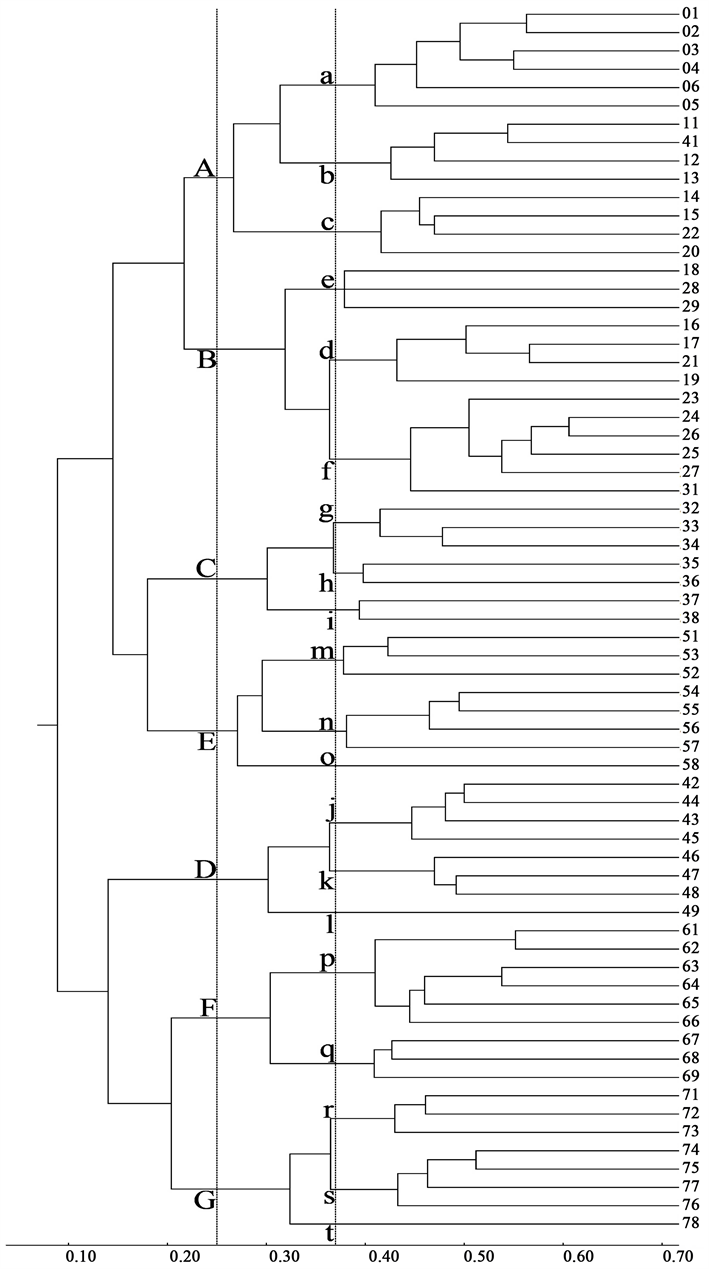
Figure 2. Dendrography of the medic important insects
图2. 医学昆虫聚类图
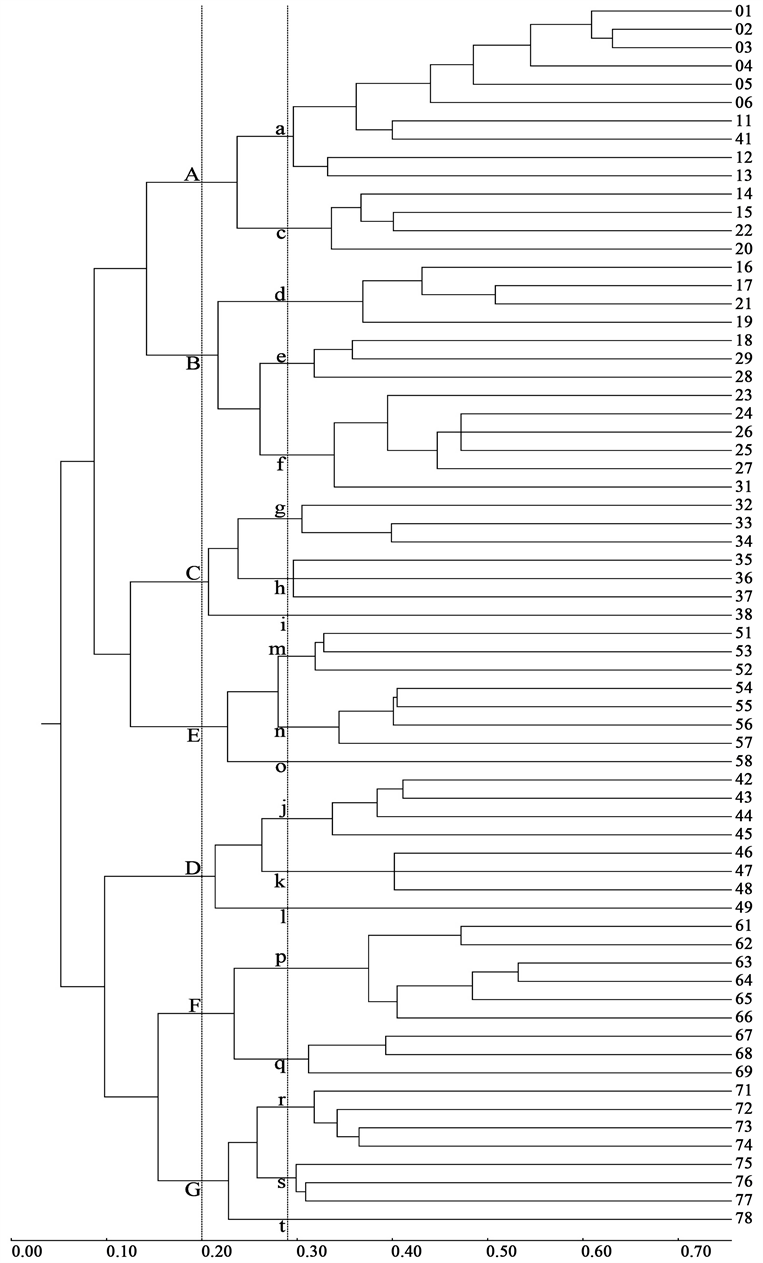
Figure 3. Dendrography of the economic significance of insects
图3. 经济昆虫聚类图
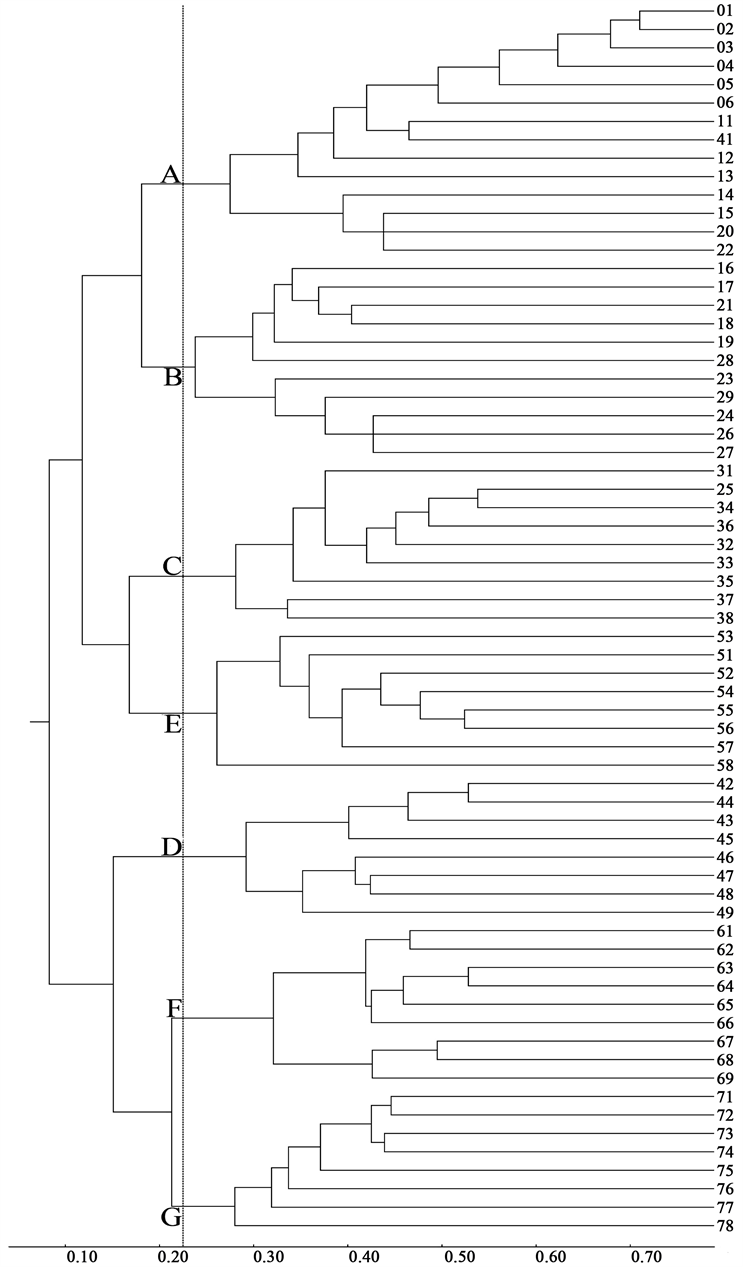
Figure 4. Dendrography of freshwater insects
图4. 淡水昆虫聚类图
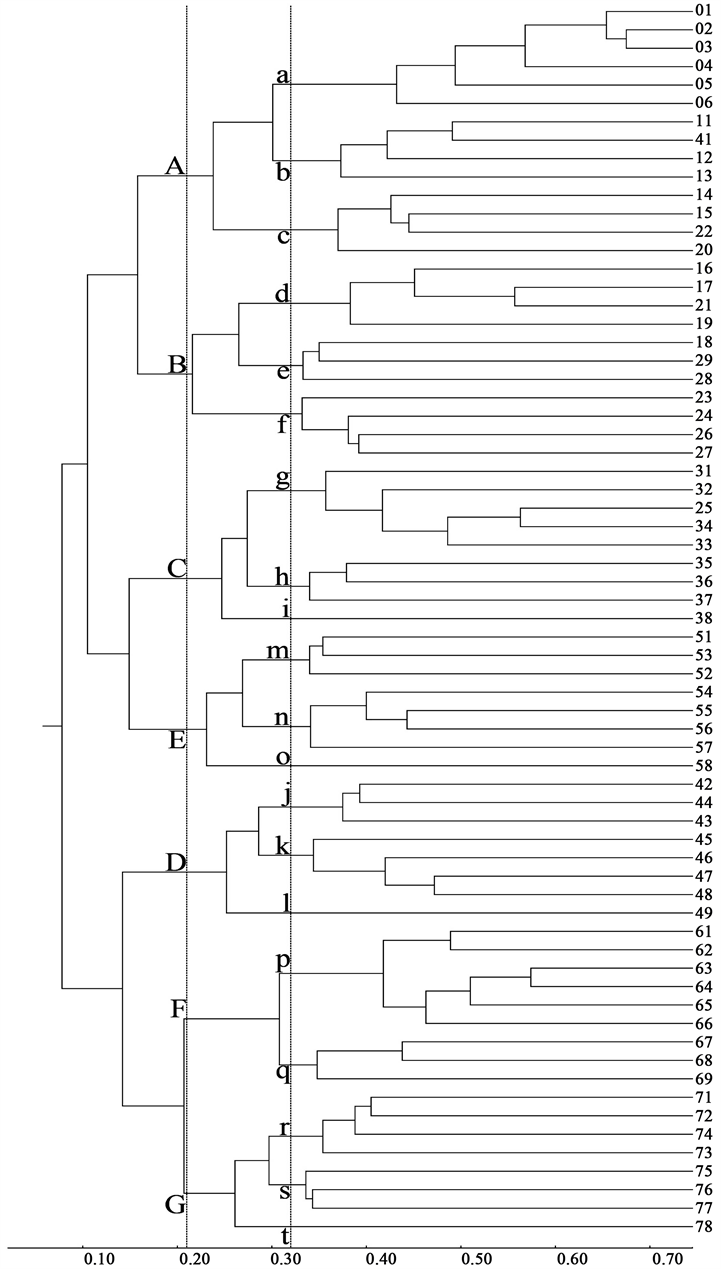
Figure 5. Dendrography of the carnivorous insects
图5. 肉食性昆虫聚类图
学界前辈提供的动物地理区划方案和植物地理区划方案是不相同的 [83] - [89] 。医学昆虫与温血动物具有生态依赖性,之间应该有相同的分布格局;经济昆虫与植物具有生态依赖性,之间也应该有相同的分布格局。本文的结果是否预示着世界上植物与动物也应该是相同的分布格局呢?如果从动物也是直接或间接地取食于植物来看,这个推断是应该成立的。这提示我们要用相同的方法对世界所有植物、动物的分布资料进行分析,以期揭示它们之间的生态关系。
4个昆虫类群的具有相同分析结果,是否意味着生态环境的差异对它们的分布格局不起影响作用呢?实际恰恰相反,这是地球的整体生态环境对生物影响的同质性形成的 [90] [91] 。现生生物属级阶元都产生于新生代,6700万年的历史铸造了生物界的整体分布格局 [92] 。对于只有1万年历史的人类文明来说,生物的区系结构是非常稳定的。
人类比其他任何生物都具有创造性和对环境的干预力,人们能够移山填海,能够开垦荒漠,能够迁徙流动,能够改造环境,这些都能够影响全球的生物多样性,甚至已有人认为目前已处在地球历史上的第六次生物大灭绝。但人类对生物多样性的影响力,估计也难以改变全球地区间的生物区系的数量关系。这并不意味着人类可以“恣意妄为”,因为威胁人类生存的是生物物种的多样性及其丰度,而不是生物地理。
致谢
我们感谢英国伦敦国王学院C. Barry Cox教授,德国格丁根大学Holger Kreft教授,美国克莱姆森大学John C. Morse教授,美国犹他大学Daniel R. Gustafsson教授,斯洛伐克科学院地理研究所Peter Vrsansky教授,法国医学院Jean-Claude Beaucournu教授,英国牛津大学Robert J. Whittaker教授,捷克兽医及制药大学Tomas Najer教授,法国巴黎大学Maram Caesar 教授,巴西圣保罗大学Michel P. Valim教授,及国内学者中国科学院杨星科研究员,中国科学院地理研究所张镱锂研究员,中南林业科技大学魏美才教授,南开大学卜文俊教授、李后魂教授,中国农业大学彩万志教授、杨定教授等,他们或热情鼓励,或赠送文献,或修饰文稿,或提出建议,促进与改善了本项研究工作。
基金项目
河南省重点实验室专项基金(112300413221)。
文章引用
申 琪,马晓静,任应党,申效诚. 世界昆虫主要生态类群的分布格局及其生态学意义—生物地理区划研究之XII
The Distribution Patterns of Main Ecological Groups of Insects in the World and Its Ecological Significance—Biogeographical Regionalization Research XII[J]. 世界生态学, 2018, 07(03): 170-184. https://doi.org/10.12677/IJE.2018.73019
参考文献
- 1. GBIF (2018) Free and Open Access to Biodiversity Data. http://gbif.org
- 2. Foottit, R.G. and Adler, P.H. (2009) Insect Bio-diversity. Blackwell Publishing Ltd., Oxford. https://doi.org/10.1002/9781444308211
- 3. Gressitt, J.L. (1958) Zoogeography of Insects. Annual Review Entomology, 3, 207-230. https://doi.org/10.1146/annurev.en.03.010158.001231
- 4. Munroe, E. (1965) Zoogeography of Insect and Allied Groups. An-nual Review Entomology, 10, 325-344. https://doi.org/10.1146/annurev.en.10.010165.001545
- 5. Gressitt, J.L. (1974) Insect Geography. Annual Review Entomology, 19, 293-321. https://doi.org/10.1146/annurev.en.19.010174.001453
- 6. Bolton, B. (1995) A New General Catalogue of the Ants of the World. Harvard University Press, Cambridge.
- 7. Herman, L.H. and Ales, S. (2001) Catalog of the Staphylinidae (Insecta: Coleoptera), 1758 to the end of the second millennium. Vol. I-Vll. Bulletin of the American Museum of Natural History, 264, 1-82. 2.0.CO;2>https://doi.org/10.1206/0003-0090(2001)264<0003:NCITSI>2.0.CO;2
- 8. Foley, D.H., Rueda, L.M. and Wilkerson, R.C. (2007) Insight into Global Mosquito Biogeography from Country Species Records. Journal of Medical Entomology, 44, 554-567. https://doi.org/10.1093/jmedent/44.4.554
- 9. Evans, G.A. (2007) The Whiteflies (Hemiptera: Aleyrodidae) of the World and Their Host Plants and Natural Enemies. 708 p. http://keys.lucidcentral.org/keys/v3/whitefly/PDF_PwP%20ETC/world-whitefly-catalog-Evans.pdf
- 10. Moor, F.C. and Ivannov, V.D. (2008) Global Diversity of Caddisflies (Trichoptera: Insecta) in Freshwater. Hydrobiologia, 595, 393-407. https://doi.org/10.1007/s10750-007-9113-2
- 11. Morse, J.C., Barnard, P.C., Holzenthal, K.W., et al. (2011) Trichoptera World Checklist. http://entweb.sites.clemson.edu/database/trichopt/
- 12. Taeger, A., Blank, S.M. and Liston, A.D. (2010) World Catalog of Symphyta (Hymenoptera). Zootaxa, 2580, 1-1064.
- 13. Vashchonok, V. and Medvedev, S. (2013) Fleas (Siphonaptera). http://www.zin.ru/Animalia/Siphonaptera
- 14. Alonso-Zarazaga, M.A. and Lyal, C.H.C. (1999) A World catalogue of families and genera of Curculionoidea (Insecta: Coleoptera). Entomopraxis, S.C.P., Barcelona, Spain.
- 15. Balian, E.V., Leveque, C., Segers, H. et al. (2008) Freshwater Animal Diversity Assessment. Hydrobiologia, 595, 1-637. https://doi.org/10.1007/978-1-4020-8259-7
- 16. Barber-James, H., Sartor, M., Gattolliat, J.L., et al. (2013) World Checklist of Freshwater Ephemeroptera Species. http://fada.biodiversity.be/group/show/35
- 17. Brooks, S.E. and Cumming, J.M. (2017) Revision of the Nearctic Parathalassius Mik (Diptera: Dolichopodidae: Parathalassiinae), with a Review of the World Fauna. Zootaxa, 4314, 1-64. https://doi.org/10.11646/zootaxa.4314.1
- 18. Brown, J.W. (2005) World Catalogue of Insects. Volume 5 Tortricidae (Lepidop-tera). Apollo Books, Stenstrup.
- 19. Dousti, A.F. and Hayat, R. (2006) A Catalogue of the Syrphidae (Insect: Diptera) of Iran. Journal of Entomological Research Society, 8, 5-38.
- 20. Durden, L.A. and Musser, G.G. (1994) The Sucking Lice (Insecta: Anoplura) of the World: A Taxonomic Checklist with Records of Mammalian Host and Geographical Distributions. American Museum of Natural History, New York.
- 21. Evenhuis, N.L. (2002) Catalog of the Mythicomyiidae of the World (Insect: Diptera). Bishop Museum Press, Honolulu.
- 22. Gaimari, S.D. and Mathis, W.N. (2011) World Catalog and Conspectus on the Family Odiniidae (Diptera: Schizophora). MYIA, 12, 291-339.
- 23. Heraty, J.M. (2002) A Revision of the Genera of Eucharitidae (Hymenoptera: Chalcidoidea) of the World. American Entomological Institute, Gainesville, 367.
- 24. Kitching, I.J. and Cadiou, J.M. (2000) Hawkmoths of the World. Lodon & Cornell University Press, Ithaca.
- 25. Knight, K.L. and Stone, A. (1977) A Catalog of the Mosquitoes of the World (Diptera: Culicidae). Entomological Society of America, Annapolis.
- 26. Krishna, K., Grimaldi, D.A., Krishna, V., et al. (2013) Treatise on the Isoptera of the World. Vol. 1-7, American Museum of Natural History, New York.
- 27. Krombein, K.V., Hurd, P.D., Smith, D.R., et al. (1979) Catalog of the Hymenoptera in America North of Mexico. Vol. 1-3, Smithsonian Institution Press, Washington DC, 2735.
- 28. Lienhard, C. and Smithers, C.N. (2002) Psocoptera (Insecta)—World Catalogue and Bibliography. Natural History Museum of the City of Geneva, Geneva.
- 29. Mathis, W.N. and Barraclough, D.A. (2011) World Catalog and Conspectus on the Family Diastatidae (Diptera: Schizophora). MYIA, 12, 235-266.
- 30. Munari, L. And Mathis, W.H. (2010) World Catalog of the Family Canacidae (Including Tethinidae) (Diptera). Zootaxa, 2471, 1-81.
- 31. Poole, R.W. (1989) Lepidopterorum Catalogus. Fascicle 118 Noctuidae. Flora & Fauna Publications, New York.
- 32. Prins, W.D. and Prins, J.D. (2005) World Catalogue of Insects. Volume 6 Gracillariidae (Lepidoptera). Apollo Books, Stenstrup.
- 33. Rohacek, J., Marshall, S.A., Norrbom, A.L., et al. (2001) World Catalog of Sphaeroceridae (Diptera). Slezsk Zemsk Muzeum, Opava.
- 34. Schlita, P.Z. (1973) Insecta: Plecoptera. Walter de Gruyter, Berlin.
- 35. Sobczyk, T. (2011) World Catalogue of Insects 10. Psychidae (Lepidoptera). Apollo Books, Stenstrup.
- 36. Usinger, R.L. (1966) Monograph of Cimicidae Vol. VII. Entomological Society of America, Annapolis, 292-490.
- 37. Volpi, L.N. and Coscaron, M.D.C. (2010) Catalog of Nabidae (Hemiptera: Heteroptera) of the Neotroppical Region. Zootaxa, 2513, 50.
- 38. Yang, D., Zhang, K.Y., Yao, G., et al. (2007) World Catalog oh Empididae (Insecta: Diptera). China Agricultural University Press, Beijing.
- 39. Yang, D., Zhu, Y.J., Wang, M.Q., et al. (2006) World Catalog of Dolichopodidae (Insecta: Diptera). China Agricultural University Press, Beijing.
- 40. Yin, X.C., Shi, J.P. and Yin, Z. (1996). A Synonymic Catalogue of Grasshoppers and Their Allies of the World (Orthoptera: Caelifera). China Forestry Publishing House, Beijing.
- 41. Adler, P.H. and Crossker, R.W. (2014) World Blackflies (Diptera: Simuliidae). http://clemson.edu
- 42. Ascher, J. and Pickering, J. (2014) Bee Species and Checklist (Hymenoptera: Apoidea). http://www.discoverlife.org
- 43. Beccdloni, G. (2014) Cockroach Species File. Version 5.0/5.0. http://blattodea.speciesFile.org
- 44. Borkent, A. (2014) World Species of Biting Midges (Diptera: Ceratopogonidae). http://inhs.illinois.edu/files
- 45. Bezark, L.G. and Monné, M.A. (2013) Checklist of the Oxypeltidae, Vesperidae, Disteniidae and Cerambycidae, (Coleoptera) of the Western Hemisphere. http://www.zin.ru/animalia/coleoptera/pdf/checklist_cerambycoidea_2013.pdf
- 46. Eades, D.C. (2014) Polyneoptera Species File. Version 5.0/5.0. http://polyneoptera.speciesfile.org/
- 47. Eades, D.C., Otte, D., Cigliano, M.M., et al. (2014) Orthoptera Species File. Version 5.0/5.0. http://orthoptera.speciesFile.org
- 48. Evenhuis, N.L. (2016) Catalog of the Diptera of the Australasian and Oceanian Regions. http://hbs.bishopmuseum.org
- 49. Evenhuis, N.L. and Greathead, D.J. (2003) World Catalog of Bee Flies (Diptera: Bombyliidae). http://www.hbs.bishopmuseum.org/bombcat
- 50. Gagne, R.J. (2010) Update for a Catalog of the Cecidomyiidae (Diptera) of the World. http://www.ars.usda.gov/SP2UserFiles/Place/12754100/Gagne_2010_World_Catalog_Cecidomyiidae.pdf
- 51. Johnson, K.P., Smith, Y.S. and Eades, D.C. (2014) Psocoptera Species File. Version 5.0/5.0. http://psocodea.speciesfile.org/HomePage/Psocodea/HomePage.aspx
- 52. Lehtinen, I. and Mound, L. (2014) Thripswiki. http://www.thrips.info/wiki
- 53. Maddison, D.R. (2009) Hemiptera. http://tolweb.org/Hemiptera/8239
- 54. Maehr, M.D. and Eades, D.C. (2014) Embioptera Species File. Version 5.0/5.0. http://embioptera.speciesFile.org
- 55. McKamey, S.H. (2000) Checklist of Leafhopper Species 1758-1955 (Hemiptera: Membracoidea: Cicadellidae and Myssserslopiidae). http://www.sel.barc.usda.gov/selhome/leafhoppers
- 56. Nilsson, A.N. (2013) A World Catalogue of the Family Dytiscidae or the Diving Beetles (Coleoptera, Adephaga). Version 1.1. http://www2.emg.umu.se/projects/biginst/andersn/WCD_20130101.pdf
- 57. Noort, S. and Rasplus, J.Y. (2014) Classification of Fig Wasps. http://www.figweb.org
- 58. O’Hara, J.E. (2016) World Genera of the Tachinidae (Diptera) and Their Regional Occurrence. http://www.nadsdiptera.org/Tach/worldTachs/genera
- 59. Oswald, J.D. (2014) Neuropterid Species of the World. http://lacewing.tamu.edu/SpeciesCatalog/Main
- 60. Otte, D., Spearman, L., Stiewe, M.B.D., et al. (2014) Mantodea Species File. Version 5.0/5.0. http://www.mantodea.speciesFile.org
- 61. Pelham, J.P. (2012) A Catalogue of the Butterflies of the United States and Canada. http://butterfliesofamerica.com
- 62. Penny, N.D. and Parinas, J.F. (2011) World Checklist of Extant Mecoptera Species. http://researcharchive.calacademy.org/research/entomology/Entomology_Resources/Mecoptera/panorpa.htm
- 63. Pickering, J. (2014) Discover Life: Mallophaga. http://www.discoverlife.org/mp/20q
- 64. Schorr, M. and Paulson, D. (2015) World Odonata List. http://www.pugetsound.edu
- 65. Schun, R.T. (2012-2013) On-Line Syatematic Catalog of Plant Bugs (Insecta: Heteroptera: Miridae). http://research.amnh.org/pbi/catalog/
- 66. Spring, S. (2013) Catalog of Subfamily Phlebotominae. http://sandflycatalog.org
- 67. Staines, C.L. (2012) Catalog of the hispines of the World (Coleoptera: Chrysomelidae: Cassidinae). http://entomology.si.edu
- 68. Webb, M., Livermore, L., Lemaitre, V., et al. (2014) Coreoidea Species File. Version 5.0/5.0. http://coreoidea.speciesFile.org
- 69. Fasbender, A. and Courtney, G.W. (2017) A Revision of Bittacomorphinae with a Review of the Monophyly of Extant Subfamilies of Ptychopteridae (Diptera). Zootaxa, 4309, 1-69. https://doi.org/10.11646/zootaxa.4309.1.1
- 70. Gustafsson, D.R. and Bush, S.E. (2017) Morphological Revision of the Hyperdiverse Brueelia-Complex (Insecta: Phthiraptera: Ischnocera: Philopteridae) with New Taxa, Checklists and Generic Key. Zootaxa, 4313, 1-443. https://doi.org/10.11646/zootaxa.4313.1.1
- 71. Jahantigh, F., Rakhshani, F., Mokhtari, A., et al. (2017) Catalogue of Ampulicidae, Crabronidae and Sphecidae of Iran (Hymenoptera, Apoidea). Zootaxa, 4307, 1-96. https://doi.org/10.11646/zootaxa.4307.1.1
- 72. Liston, A.D., Heibo, E., Prous, M., et al. (2017) North European Gall-Inducing Euura Sawflies (Hymenoptera, Tenthredinidae, Nematinae). Zootaxa, 4302, 1-115. https://doi.org/10.11646/zootaxa.4302.1.1
- 73. 申效诚, 王爱萍. 昆虫区系多元相似性的简便计算方法及其贡献率[J]. 河南农业科学, 2008, 37(7): 67-69.
- 74. 申效诚, 孙浩, 赵华东. 昆虫区系多元相似性分析方法[J]. 生态学报, 2008, 28: 849-854.
- 75. 申效诚, 任应党, 王爱萍, 等. 河南昆虫、蜘蛛、蜱螨地理分布的多元相似性聚类分析[J]. 生态学报, 2010, 30: 4416-4426.
- 76. 申效诚, 孙浩, 马晓静. 中国40000种昆虫蜘蛛区系的多元相似性聚类分析[J]. Journal of Life Sciences, 2010, 4(2): 35-40.
- 77. 申效诚, 刘新涛, 任应党, 等. 中国昆虫区系的多元相似性分析及地理区划[J]. 昆虫学报, 2013, 56: 896-906.
- 78. 申效诚, 张抱石, 张峰, 等. 世界蜘蛛的分布格局及其多元相似性聚类分析[J]. 生态学报, 2013, 33: 6795-6802.
- 79. 申效诚, 任应党, 牛瑶. 河南昆虫志区系及分布[J]. 北京: 科学出版社, 2014.
- 80. 申效诚, 等. 中国昆虫地理[M]. 郑州: 河南科学技术出版社, 2015.
- 81. 申琪. 中国医学昆虫的多元相似性聚类分析[J]. 寄生虫与医学昆虫学报, 2014, 21: 165-171.
- 82. 刘新涛, 刘晓光, 申琪, 等. 合并与不合并——相似性聚类分析方法的比较[J]. 生态学报, 2013, 33: 3480-3487.
- 83. Sclater, P.L. (1858) On the General Geographical Distribution of the Members of the Class Aves. Zoological Journal of the Linnean Society, 2, 130-145. https://doi.org/10.1111/j.1096-3642.1858.tb02549.x
- 84. Wallace, A.R. (1876) The Geographical Distribution of Animals. Cambridge Univ. Press, Cambridge.
- 85. Engler, A. (1879) Versuch einer Entwicklungsgeschichte der Pflanzenwelt. Engelmann, Leipzig.
- 86. Takhtajan, A. (1978) Floristic regions of the World. University of California Press, Oakland.
- 87. Cox, C.B. (2001) The Biogeographic Regions Reconsidered. Journal of Biogeography, 28, 511-523. https://doi.org/10.1046/j.1365-2699.2001.00566.x
- 88. Kreft, H. and Jetz, W. (2010) A Framework for Delineating Biogeographical Regions Based on Species Distributions. Journal of Biogeography, 37, 2029-2053. https://doi.org/10.1111/j.1365-2699.2010.02375.x
- 89. Holt, B.G., et al. (2013) An Update of Wallace’s Zoogeographic Regions of the World. Science, 339, 74-78. https://doi.org/10.1126/science.1228282
- 90. 申效诚, 任应党, 申琪, 等. 世界生物分布的宏观特征——地理区划研究之III[J]. 世界生态学, 2018, 7(2): 98-128.
- 91. 申效诚, 任应党, 马晓静, 等. 世界双子叶植物分布格局的聚类分析及地理区划——生物地理区划研究之X[J]. 植物学研究, 2018, 7(4): 405-417.
- 92. Cox, C.B. and Moore, P.D. (2005) Biogeography: An Ecological and Evolutionary Approach. Seventh Edition, Blackwell Publishing Ltd., Hoboken.
NOTES
*通讯作者。
